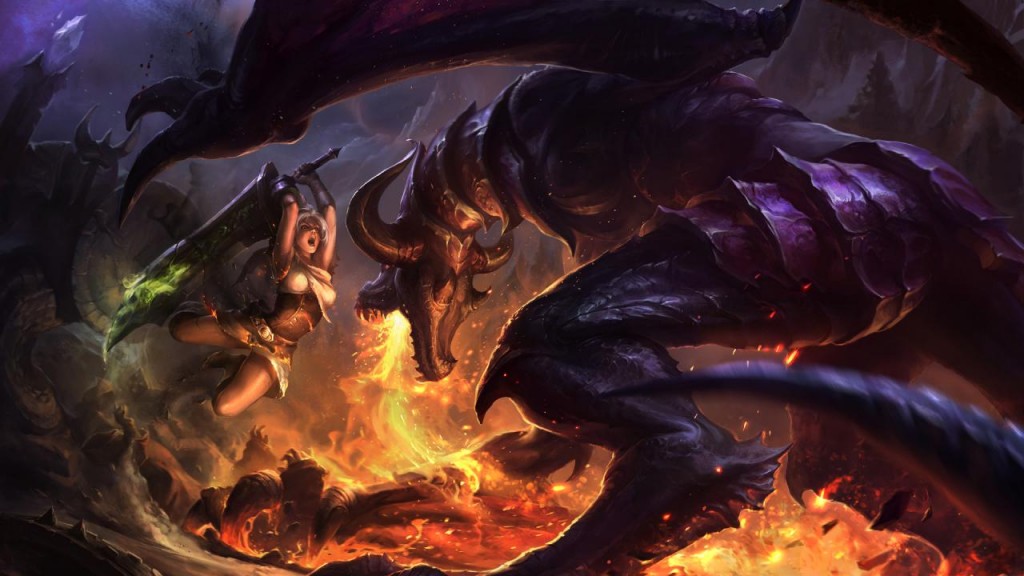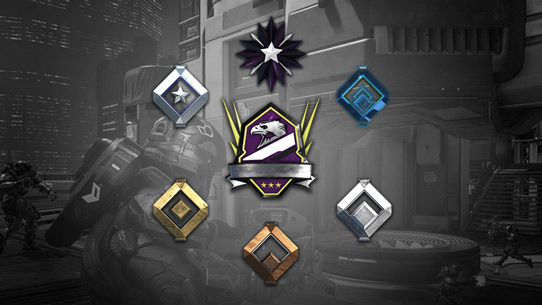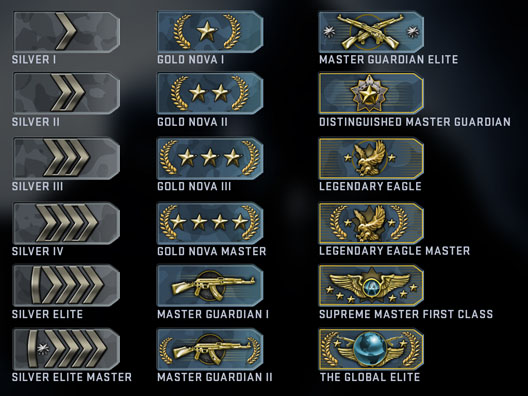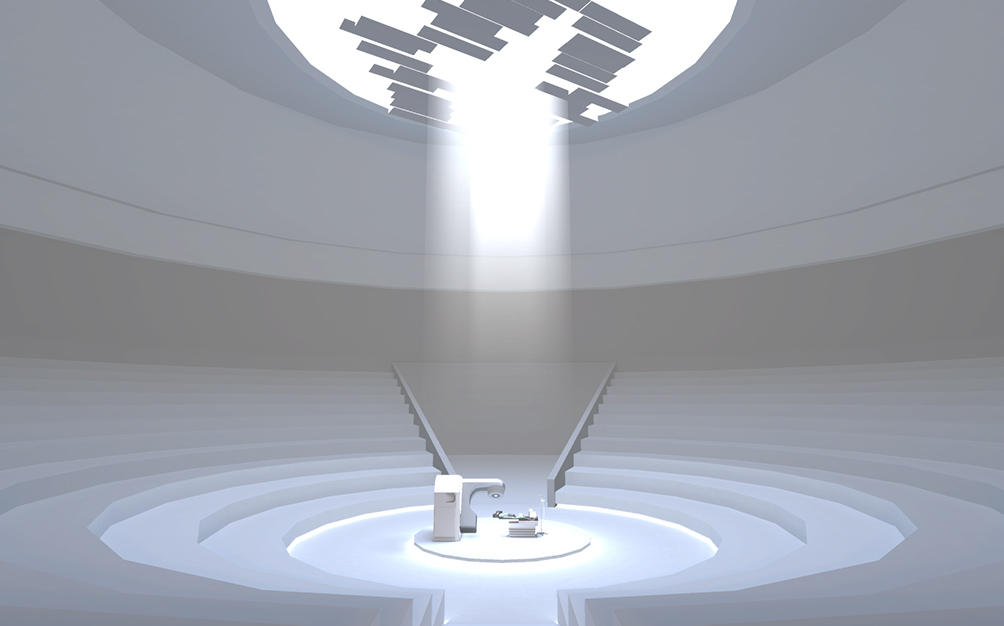Over the years, I’ve found that my taste in games has changed. When I was younger I could easily plop down in front of the TV, fire up a JRPG or open world game, and play for hours. More recently I’ve found it difficult to play in such large chunks. Partially because I have more responsibilities to handle than I did in my high school days and partially for reasons I haven’t entirely yet. Instead, I’ve found myself gravitating towards games that can be played in shorter bursts, as well as games with competitive aspects.
I’ve been playing League of Legends for many years but have recently picked up Counter-Strike, Halo, and Hearthstone. Their competitive modes are what got me interested in them and what keep me coming back. Climbing the ranked ladders is a great challenge, and thanks to the games’ large populations I feel like I can make progress without having to play for hours each and every day. While I enjoy each game on its own, I’ve noticed the way that their ranking systems work greatly affect how, and how much, I play them.
Year Long Seasons-

League of Legends was my first real experience with ranked competition in video games. Each calendar year, roughly speaking, is its own competitive season. You earn your rank in the beginning of the year and it follows you for the next twelve months before resetting at the start of the next year. While I enjoy seeing the year-long progression in my rank, the length of the season negates any sense of urgency to play. Over the past few years I’ve found myself waiting months before playing ranked games, rather than playing casual games with friends, simply because I feel like I’ll have plenty of time later In the last couple months of the season is when I begin playing ranked matches in earnest, once the sense of urgency has appeared. The rewards also do not vary much based on your rank, further reducing the urgency.
Month Long Seasons

Halo and Hearthstone both employ month long seasons but have very different reward structures. The fact that your rank resets every month make each month feel like a clean slate. Players want to see how high they can place and know that they don’t have much time before their rank is wiped clean and they will need to begin again. This creates the feeling of a time crunch on a more regular basis, drawing players to the game’s ranked modes more consistently.
The difference between these games is in the rewards they offer for ranked play. Halo offers cosmetic items, but nothing of real in-game value. By contrast, Hearthstone awards a cosmetic, but also gives players cards to use in their deck, and dust to craft with. Cosmetics are a nice way for players to show off, but providing rewards that have actual in game value creates a larger incentive to play. That’s why I find myself gravitating towards Hearthstone over Halo at the end of the month.
Never Ending Seasons

Counter-Strike: Global Offensive breaks the mold set by the other games, featuring a ranked mode that does not have competitive seasons or rank resets. While having the slate wiped clean occasionally can make players feel like they have a chance to really improve their rank, the consistency of never having a reset also has its benefits. For example, this month, I placed into Platinum 1 in Halo’s Team Arena game mode. Given that this was a large jump from my rank last month, I feel that I may have gotten placed highly due to a fluke. By contrast, I’m quite confident that my rank in Counter-Strike is the one I deserve. While there is no real urgency to improving my rank, I still enjoy playing from time to time and trying to improve. I just find myself choosing to play the other games more often due aspects of the ranked system outside the actual gameplay.
Why the Varying Lengths and Rewards? Can it be Done Better?
One requirement for an accurate ranking system is an adequate sample size. This is why most of the games listed require that you play a certain number of games before you are given a rank. Similarly, it is why the first handful of games you play after receiving your placement cause greater movements in your rank. If you assume that each game’s ranking system requires the same sample size, then the season length makes sense. Halo and Hearthstone matches take ten to fifteen minutes to play out, so one month is more than enough time to get an adequate number of games in. League of Legends games can take as long as an hour, making a year-long season reasonable. Counter-Strike games take longer still, so a rank that never resets also makes sense for the game.
I’ve already mentioned my preference for Hearthstone’s style: short seasons with tangible, game affecting rewards. League of Legends’ rewards come in second because they include a free champion, assuming you did not already own the character that season’s reward skin is attached to. Halo, by default, comes in third because Counter-Strike has no rewards for ranked.
The question becomes: how can each game make the most of its ranked mode?
I believe that League of Legends could benefit from having a ranked season that mirrors their professional league. Divide the year up into a spring season, summer season, fall/championship season, and the winter off-season/pre-season. Create some kind of rewards that can be given out at the end of each part of the season, and one large reward for the end of the competitive year. Even if the rank reset still only happened once a year, this would get people playing more by setting more frequent rank deadlines. So long as the rewards are appealing, not something simple like a summoner icon, this system could improve the rate at which people play ranked games.
Counter-Strike would be suited to a similar style, but would probably want to use its major tournaments as the dividers for each section of the season. It wouldn’t necessarily have to implement a ranking reset each year, but doing so would be an effective way to bring back players who were disappointed or demoralized by the rank they received. With regards to rewards, Counter-Strike has a great option already built into the game. An exclusive skin, or perhaps a free to open crate with better odds than usual, would be an adequate reward for ranked play.
Halo’s season length is short enough to keep players consistently interested but the rewards, a req pack that includes a few items, and a cosmetic emblem, are lacking. The problem is that Halo’s game design is not conducive to providing rewards that have an impact on how you play the game. I think that the best balance would be ensuring that the req pack reward has some high powered rare and legendary reqs, with the quality/quantity increasing with rank. This would be enough to make earning a high rank feel good, without unbalancing the game in Warzone.
As ranked competitive matchmaking has become more common in games we have seen a variety of different styles and philosophies on how it should be structured. Do you have any thoughts on the rise on ranked matchmaking and how to make it better? Please share it below in the comments.

